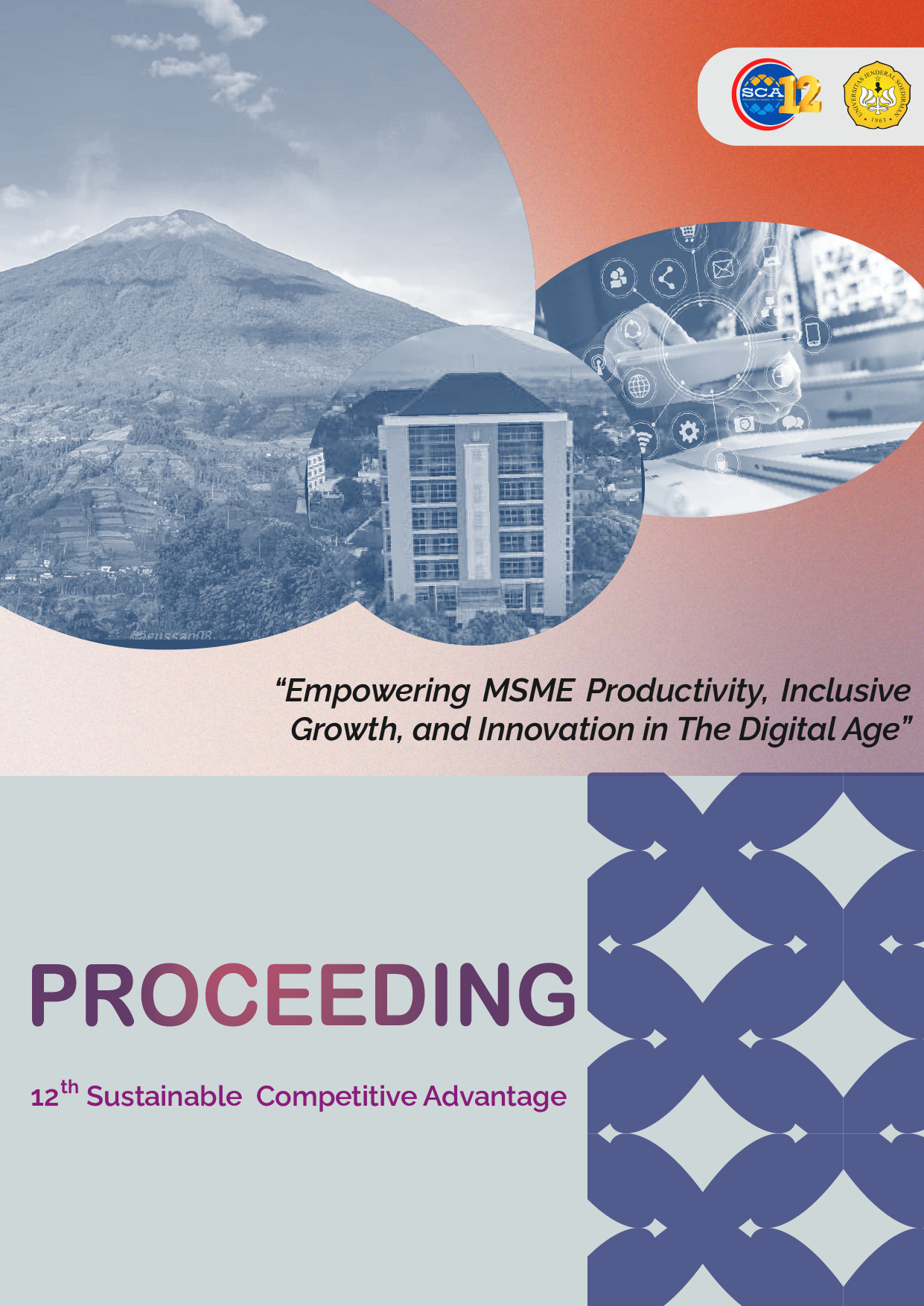Development Model of Sociopreneur MSME based on Pentahelix Network
Abstract
Using the Pentahelix Framework, this study aims to present a conceptual model concerning the type of assistance required by UMKM in order to survive in their early phases. This is a qualitative study that employs the Focus Group Discussion approach, with participants consisting of six early-stage technology-based business founders and CEOs who were convened to hold a series of discussions about the issues. As the key contribution from the conversation, a model called Pentahelix support for startups was depicted. This model provides policymakers with a complete practical guidance to supporting startups from five perspectives.
Keywords: support for startups, Penta Helix, focus group discussion
References
Awaluddin , M., Sule , ET, & Kaltum , U. (2016). the Influence of competitive forces and value creation on company reputation and competitive strategy: a case of digital creative industry in Indonesia with the Implications on sustainable business performance. International Journal of Economics, Commerce and Management, IV( 2), 201–234.
Campbell, DFJ, Carayannis , EG, & Rehman, SS (2015). Quadruple Helix structures of quality of democracy in innovation systems: the USA, OECD countries, and EU member countries in global comparison. Journal of the Knowledge Economy, 6(3), 467–493. https://doi.org/10.1007/s13132-015-0246-7
Dees, G., Emerson, J., & Economy, P. (2001). Enterprising nonprofits: A tool Kit of social entrepreneurs. California: Wiley Nonprofits Series.
Dolfsma , W., & Soete , L. (2006). Understanding the dynamics of a knowledge economy. Studies in Evolutionary Political Economy, ix. http://search.ebscohost.com/login.aspx?direct= true&db = eoh&AN =0873801&site= ehost -live
Etzkowitz , H., & Leydesdorff , L. (1995). The Triple Helix – University-industry-government relations: A laboratory for knowledge based economic development. EASST Review, 14(1), 14–19.
Etzkowitz , H., & Leydesdorff , L. (2000a). The dynamics of innovation: from National Systems and "Mode 2" to a Triple Helix of university. Research Policy, 29(2), 109. http://search . ebscohost.com/login.aspx?direct=true&db=bth&AN=2815434&site=ehost-live&scope=site
Etzkowitz , H., & Leydesdorff , L. (2000b). The dynamics of innovation: from National Systems and “Mode 2” to a Triple Helix of university–industry–government relations. Research
Policy, 29(2), 109–123. https://doi.org/10.1016/S0048-7333(99)00055-4
Etzkowitz , H., & Zhou, C. (2017). Innovation incommensurability and the science park. R and D Management, 48(1), 73-87. https://doi.org/10.1111/radm.12266
Fyodorov , MV, Peshina , EV, Gredina , OV, & Avdeev, P. A. ( 2012). Pentahelix as a concept of knowledge production in an innovative economy. Upravlenec .
Lindmark, A., Sturesson , E., & Nilsson- Roos , M. (2009). Diffi culties of collaboration for innovation-A study in the Öresund region ( Masters Thesis). Lund University, Lund, Sweden.
Mulyana , S. (2014). Enhancement capability innovation , excellence competition and performance through the quadruple helix approach : a study on industry creative fashion sector . Journal Management
Technology , 13(3), 304–321. https://doi.org/10.12695/jmt.2014.13.3.5
Muhyi , HA, Chan, A., Sukoco , I., & Herawaty , T. (2017). The Penta Helix collaboration model in developing centers of flagship industry in Bandung city. Review of Integrative Business and Economics Research, 6(1), 412–417.
Parveen, S., Monday , AA, & Umar, A. (2015). Organization culture and open innovation: A Quadruple Helix Open Innovation Model Approach. International Journal of Economics and Financial Issues, 5(2), 335–342.
Tonkovic , AM, Veckie , E., & Veckie , VW (2015). Applications Of Penta Helix Model In economic development. Economy of Eastern Croatia Yesterday, Today, Tomorrow .
www.djkn.kemenkeu.go.id
www.djkn.kemenkeu.go.id

